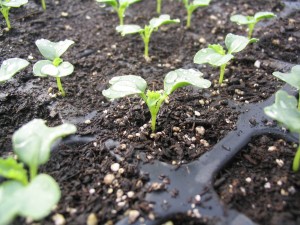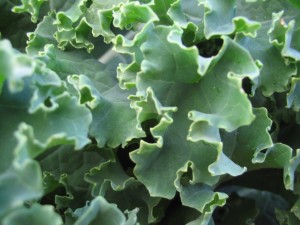Availability, Nutrition, and Recipe Suggestions
In Season: Fresh Kale is available June through the late fall and into the winter.
Storage: Kale can be kept in the fridge in a plastic bag.
Preservation: If you don’t need Kale to maintain its texture you can simply freeze it, otherwise a quick blanch first is best.
Production Notes: The kale season is long, though the time of year will impact the flavors and tenderness in our kale. For folks seeking the sweetest leaves, you’ll have to wait until we receive a couple of good frosts in the fall to bring out the maximum sweetness. Spring and early Summer Kale is often quite tender and well suited for light cooking and/or salads; while summer Kale is typically a bit tougher because we don’t use irrigation in our fields.
Varieties: Our standard curly kale varieties, including Starbor, are available loose cut in bags. Depending on the season we typically have a wide variety in rotation including Russian types and Toscano Kale. Some years we include traditional Portuguese Kale, Beira Trochunda in our planting plans.
Nutrition: Kale is packed with vitamins and minerals, according to WHFoods.com Vitamin K is very well supplied by a single serving of Kale.
Deep Nutrition: Kale is a great source of Lutein, which has been linked to reducing macular degeneration and according to a recently published study from the University of Illinois may help “counter cognitive aging.
Deep Science: Role of Lutein in Eye Related Disease [Koushan, Nutrient 2013] presents a good case for eating eggs and/or kale.
Preparation: Our bagged Kale is typically not washed and therefore we recommend you wash your kale before eating. A simple steaming or light sauteing will preserve crunch and texture and may release nutrients unavailable in raw kale. Including quality fats in your diet when eating nutrient packed greens is always a good idea to improve uptake and retention of fat soluble vitamins (including Vitamin K)!
- Crispy Kale Chips are all the rage [Food Network] or dress them up with curry or chili powder
- Traditional Tuscan Bean Soup with Kale, a great reason to roast a local Chicken and make stock…
- For those committed to flavor, Ribollita with dry beans and Tuscan Kale, I recall traveling in Tuscany many years ago admiring their February Kale “bushes”, truly massive plants…
Yum.

